Road Bike Disc Brakes - The Future of Road Bikes or will Rim Brakes Remain?
Road bike disc brakes have become increasingly commonplace. Last year the UCI halted their experiment with them, but this year Kittel was the first sprinter in the history of the Tour who won a stage riding disc brakes. If we look at the latest collection of 2018 road bikes, the trend of disc brakes is seemingly an irreversible one. So what are the differences compared to the “old” rim brakes? We discuss the most important similarities and differences between the two brake systems.
Firstly we take a look at road bike wheels. Wheels come with various different types of brake tracks. Most wheels come with aluminium brake tracks. These offer fairly consistent and dependable brake performance under all conditions.
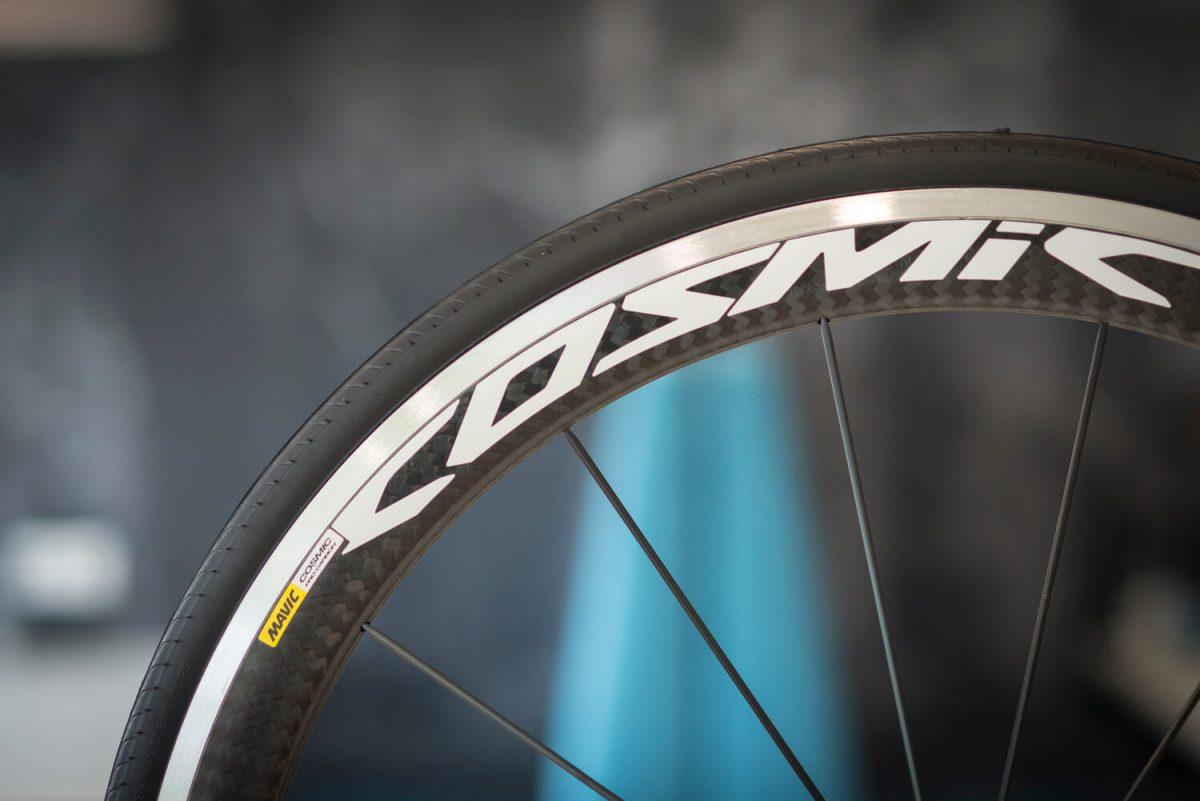
Some manufacturers go one step further. Rather than using a regular aluminium brake track, they’ve developed a special brake surface for improved stopping power. Examples of which are Mavic’s Exalith brake tracks, Fulcrum’s (and Campagnolo’s Plasma Electrolytic Oxidation (PEO) or DT Swiss’ OXiC brake surface.
Improved brake performance
These special surfaces improve brake performance, which is particularly noticeable in wet weather. High end carbon wheels have a carbon brake surface as well, rather than aluminium. There’s a smoother transition from rim to brake track. This reduces the weight, particularly in deep section wheels, and makes the brake surface into a more aerodynamic whole.

Though the brake performance of carbon wheels has been hugely increased over the last few years, we still have to admit that carbon brake track wheels simply don’t stop as well in the rain as their aluminium counterparts.
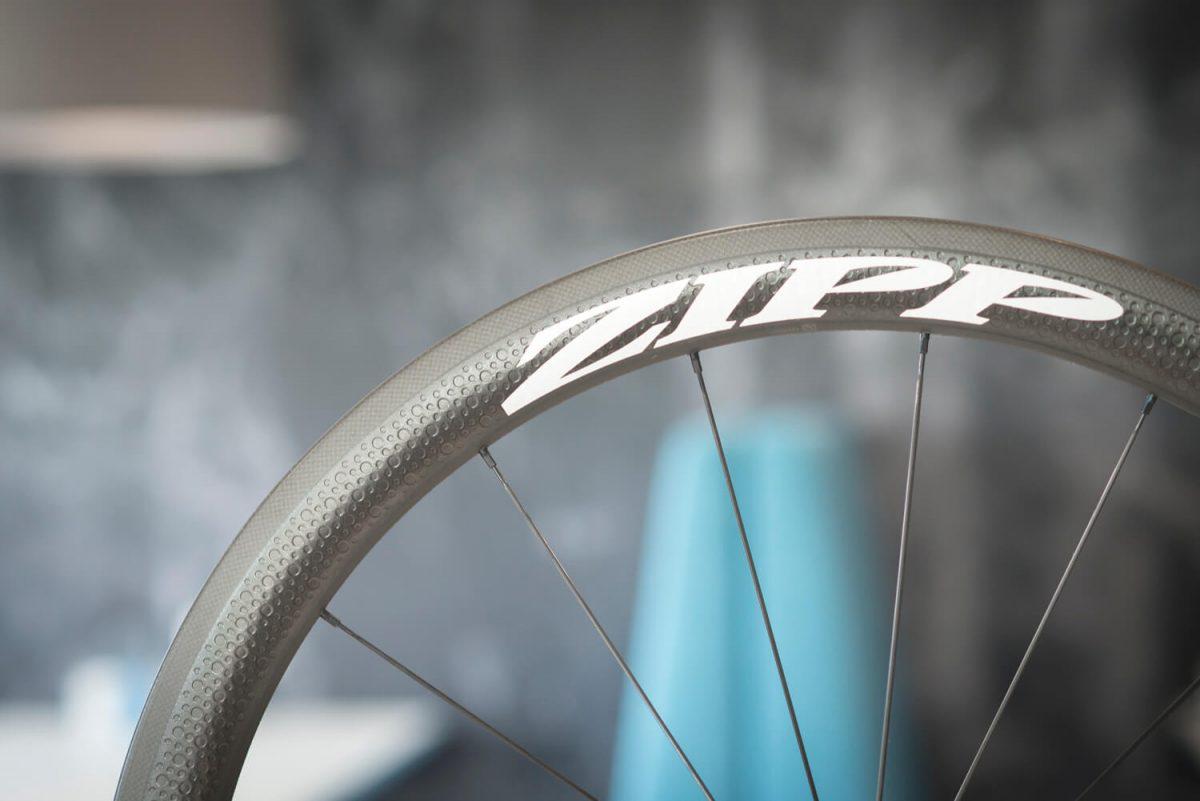
It was a reason for many road bike manufacturers to take a look at what disc brakes have brought to mountain bikes. Not entirely surprising that more and more disc brake road bikes have been released onto the market over the last few years.
Disc brakes allow for wider tyres
Another thing that helps the cause of disc brakes along is the trend of ever wider tyres being fitted to road bikes. The choice for wider rubber can be rationally explained. The rest of the bike has been steadily becoming more and more stiff, which has happened at the expense of rider comfort.
Steel frames, leather saddles, and 32-spoke wheels might not be faster, but they did absorb a lot of the vibrations and bumps from the road surface rather than passing them straight on to the rider.
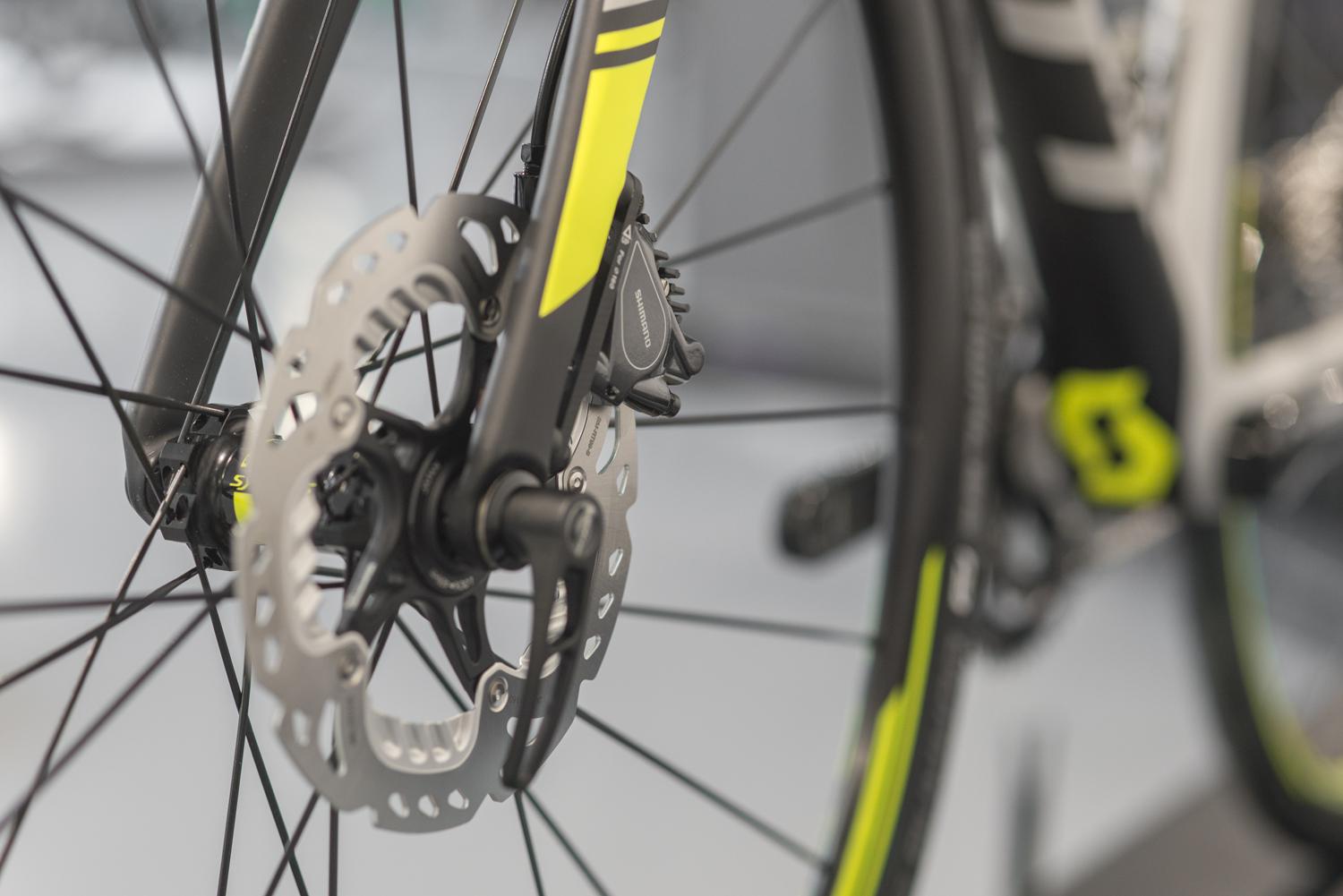
Cyclists do everything they can to train right, eat right, and stay out of the wind in order to arrive in the final part of the race as fit as they can be.
During the race, your body becomes increasingly fatigued by all the vibrations and knocks it has to absorb, meaning you won’t quite be able to perform at your very best. A wider tyre can be a great solution.
The bigger the tyre, the wider or taller it becomes. This creates a larger air chamber that can be compressed when you ride over bumps and grip, in turn improving rider comfort.
This is an actually noticeable difference between 23 and 25 mm tyres. Wider tyres are more comfortable then. First strong point made. And to get rid of any misconceptions: you won’t pay for your newfound comfort in rolling resistance.
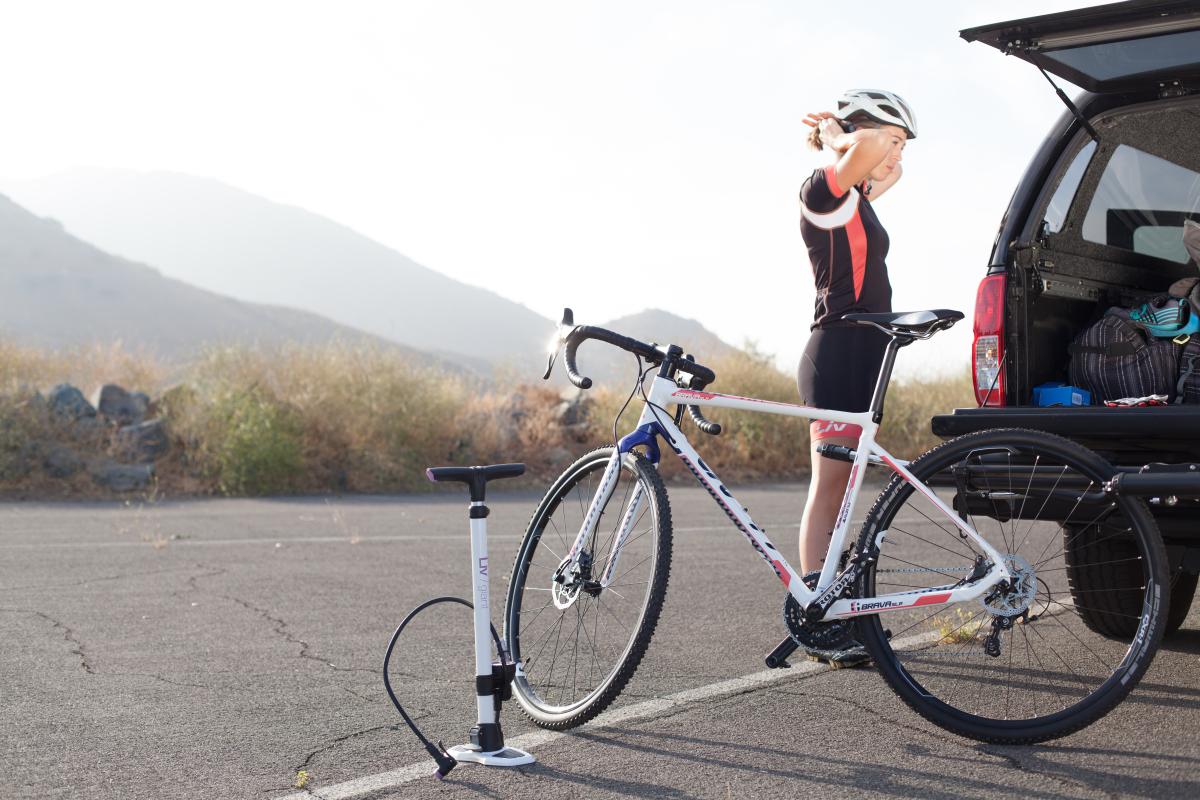
This trend is now even pushing towards 28 and 32 mm tyres. New wheels are fitted with increasingly wide rims, better facilitating the wider tyres. It’s the other leading trend in the world of wheels which besides tyre width also helps aerodynamics.
Why would you buy a disc brake road bike?
The arrival of disc brakes has made the function of the classic aluminium (or carbon) brake track obsolete. A great development if you ask us, since the rim wasn’t primarily designed to serve as a brake surface. Instead, it should roll over various surfaces as smoothly as possible.

No matter what manufacturers will come up with to improve the brake performance of rim brakes, they won’t be able to match disc brakes. Disc brakes also make wheels a lot more durable since the rim won’t get worn down over time.
https://www.youtube.com/watch?v=t0hKMgUEku4
This can make it a lot more interesting for recreational riders to switch to carbon road bike wheels.
Up to recently, the weight of disc brakes was an important argument against them.
Disc brakes and weight
Weight is a key factor when talking wheels. Lightweight wheels accelerate noticeably quicker and handle smoother. It also helps if you’re a frequent climber. The same goes for stiff wheels though. A proper balance between stiffness and weight is therefore key.

Is a road bike with disc brakes heavier than a rim brake road bike? The answer to that is yes. The difference in weight is, depending on the model and price, between 500 and 200 grams. As is the case with most road bike components: the lighter something gets, the more expensive it becomes. The extra weight from the hydraulic disc brakes is something you won’t notice on the open road however.
Are disc brakes or rim brakes better on your road bike?
The classic mechanical rim brake is easy to install and simple to service. Some touring bikes, hybrids, and e-bikes have hydraulic rim brakes. Since these aren’t used with road bikes, we won’t discuss these here.
If we look at the way rim brakes work, we can spot several drawbacks. In wet conditions they lose part -or a lot- of their stopping power.
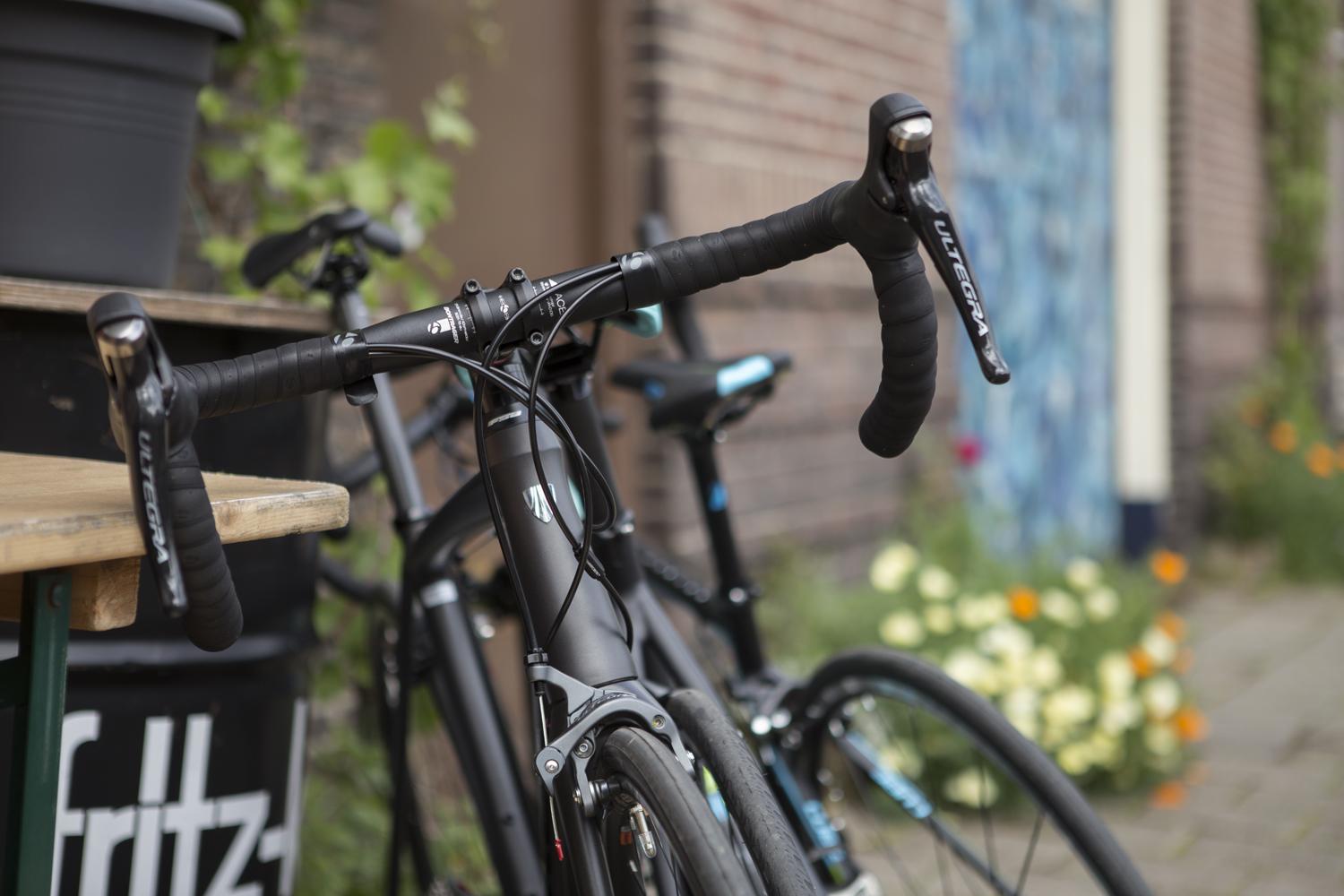
They’re also sensitive to dirt. True, you suffer from far more dirt off-road on a mountain bike than on-road on your road bike. The result still stands: if the rim is dirty, you lose stopping power and both the rim and pads will wear even faster.
The ultimate consequence of this is the brake track wearing out completely, rendering the wheel effectively useless.
Another point to consider is the clearance between the tyre and brake caliper. This space is a limiting factor for the maximum tyre size you can run. Fenders are often even a bigger no-no!
Why buy a disc brake road bike?
Until fairly recently, disc brakes were reserved to pretty much just mountain bikes. Disc brakes are powerful, fairly easy to maintain, and brake rotors are reasonably inexpensive to replace.
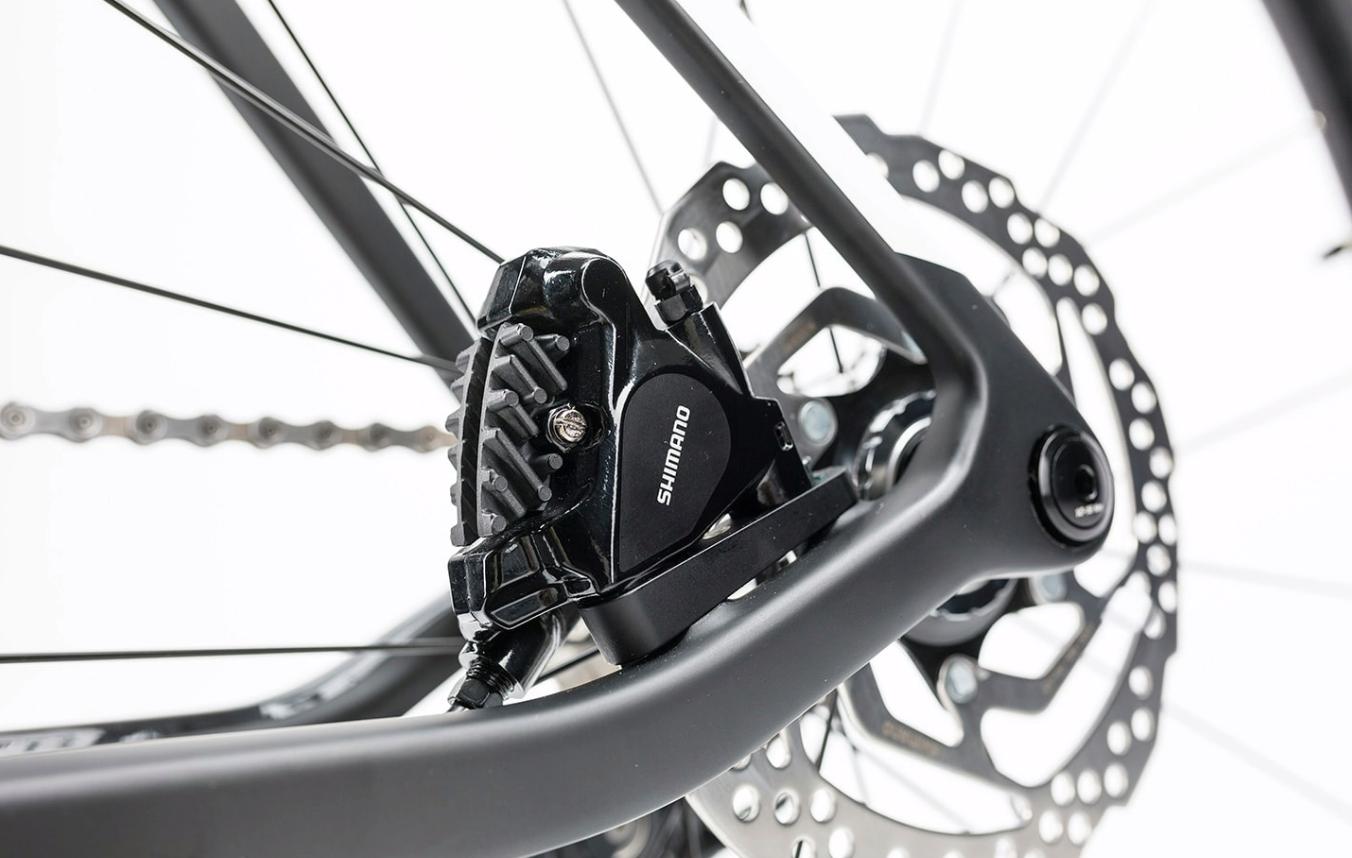
Disc brakes work well in both dry and wet conditions. Contrary to rim brakes, you don’t suffer from brake tracks that wear over time, or even worse: overheat on a descend.
A downside to disc brakes: the clearance between the rotor and brake pads is minimal. If the wheels aren’t perfectly aligned into the frame, you’ll end up with the rotor dragging on the pads.
Disc brakes: yes or no?
We gladly leave that final judgement up to you. At the time of writing, rim brakes and components are available all around the world at decent prices. There are very few incompatibility issues. A rim brake road bike wheel fits to almost every bike as well. We expect disc brakes to eventually reach this same level of standardisation, but right now there are some incompatibility issues which mostly crop up in road racing.
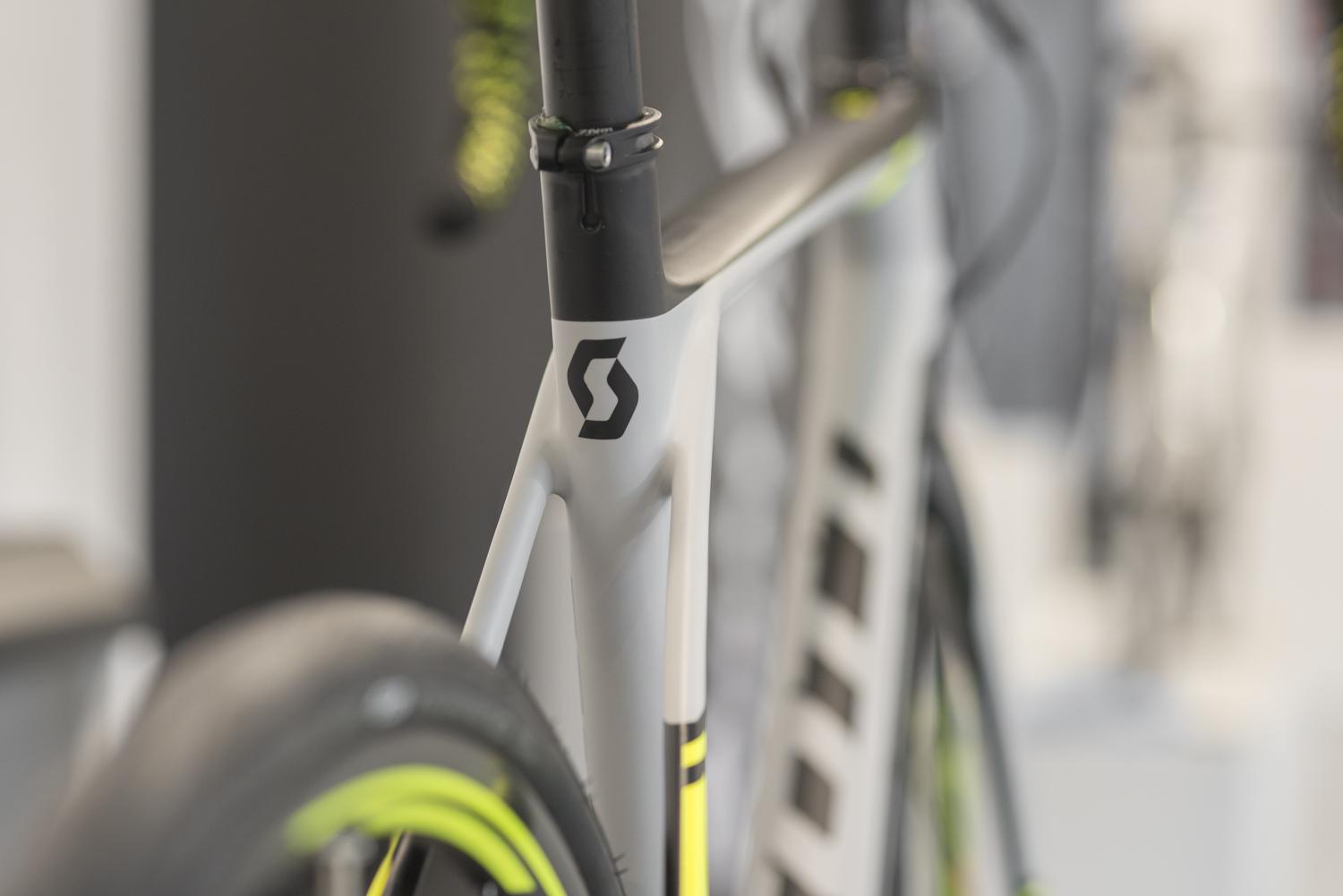
The weight of disc brakes is seemingly dropping by the day, but it has yet to reach the level of rim brakes. We expect this to get better and better over time, as long as there are weight weenies who keep pushing the technological development of disc brakes.
Disc brakes on a road bike means through axles as well
A bicycle fitted with disc brakes and through axles will, to an extent, feel a little more responsive than its rim brake and quick-release equipped counterpart. A positive impact then on handling and power transfer efficiency.
Finally, the difference between rim brakes and disc brakes is an aesthetic matter as well. Does your heart beat faster at the sight of deep rims with sleek hubs? Or can you appreciate the extra bling those rotors add to the bike?
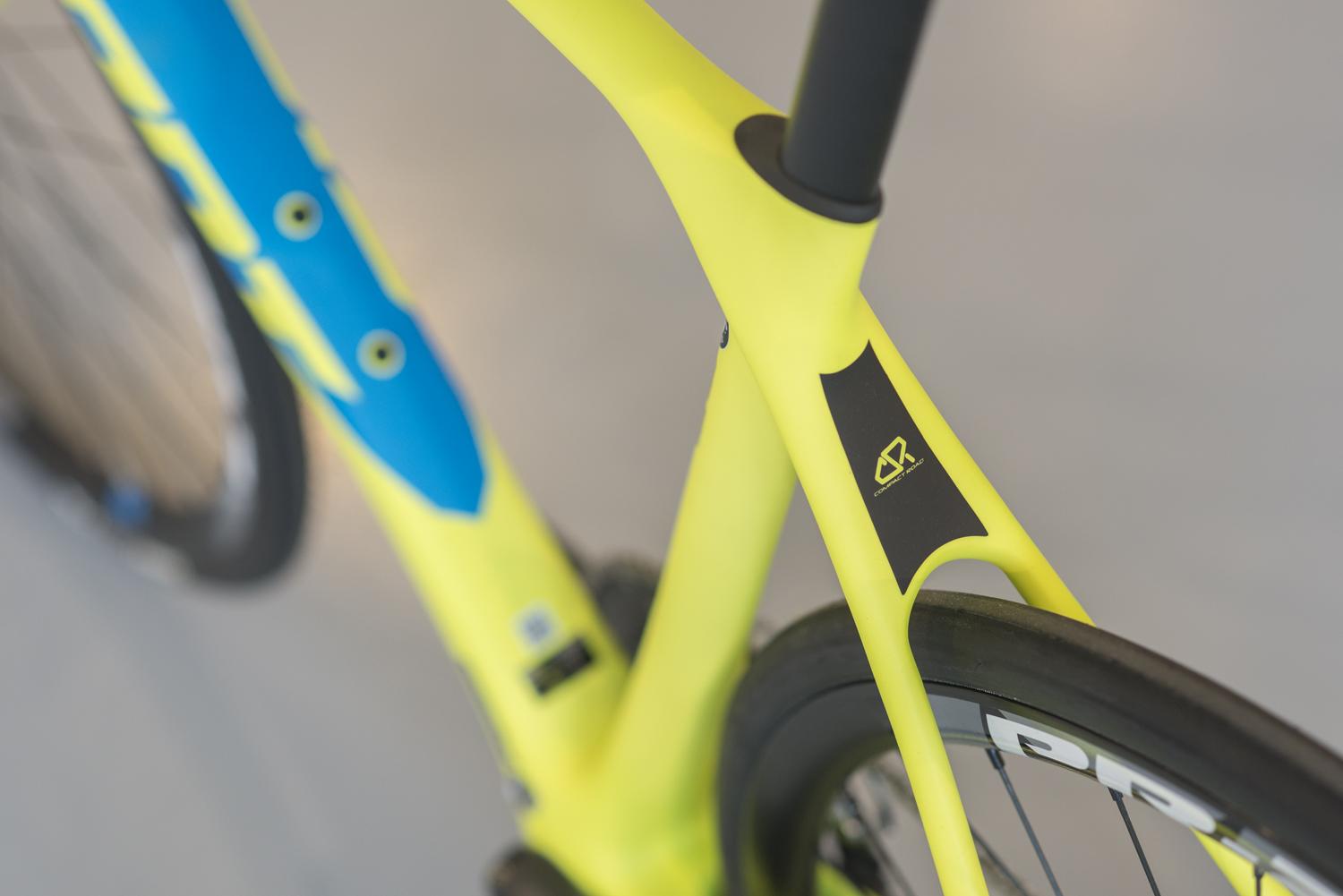
So many choices… One thing’s for sure though: the transition to road bikes with disc brakes has started, and it seems all but irreversible.
Olle Vastbinder
You can find me on a bicycle almost every day. I commute each day from my house to work and back. Often on my road bike, and during the winter on an old crosser. And if that isn't enough, you can find me on my bike during most weekends too. On my trusty road bike or my mountainbike. And if you can't find me outdoors riding my bike, odds are I might be riding on Zwift
Related posts

Gift ideas for Christmas: a perfect present for every cyclist!
8 December 2023Gift ideas for Christmas: a perfect present for every cyclist!The Christmas holidays are just around the corner! If you ...

What winter cycling gear do I need for which temperature? [Buyer's Guide]
18 October 2023The leaves on the trees are slowly turning shades of red and yellow ...
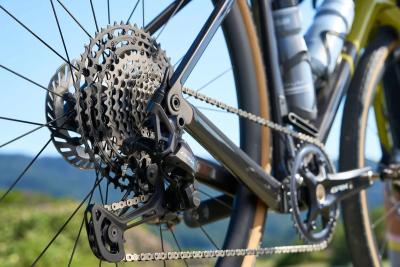
Shimano Launches New Mechanical 12-speed Gravel GRX 820 and 105 R7100 Road Bike Groupsets
31 August 2023The cycling world is constantly innovating to improve performance and the cycling experience ...
 Nederland
Nederland België
België Deutschland
Deutschland United Kingdom
United Kingdom Finland
Finland Ireland
Ireland Luxembourg
Luxembourg Portugal
Portugal Poland
Poland Österreich
Österreich France
France España
España Italia
Italia Sverige
Sverige Danmark
Danmark










































































































































































































































